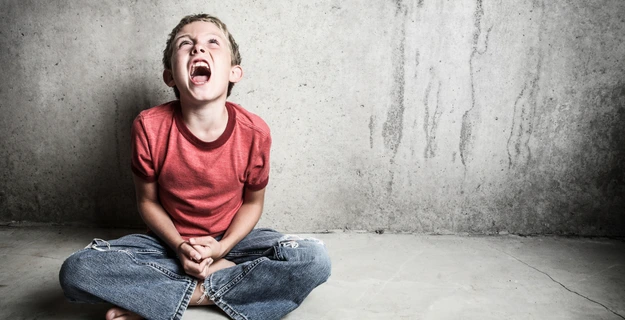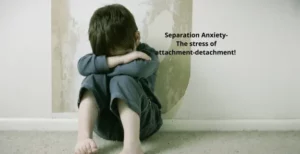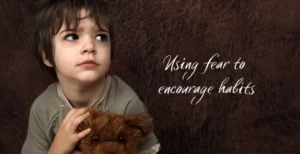You are ready to go for a birthday party, geared up! Your excited little one is curious about the games, balloons, meeting friends, and eating delicious food! You get ready to leave and suddenly, the child is upset, uncontrollably crying over a pair of shoes he doesn’t want to wear, preferring other shoes, and suddenly not liking anything! You are stunned by what really happened and your fierce reaction, unfortunately, aggravates the situation. The child looks for displacing whatever he is feeling to the objects around either by hitting, throwing things, or crying out loud. After a series of action-reaction and reciprocation, you feel confused, end up yelling and eventually feeling drained.
….
A temper tantrum isn’t ideally bad behavior. Tantrums are how children literally communicate. It is a state where emotions are oozing, foreign to the child. A temper tantrum is a reaction, a result of difficulty dealing with hard emotions. It is a response. It is just a neutral behavior. It appears differently as the child grows and varies in triggers.
Here are 3 reasons why tantrums are good news!!
1. A temper tantrum is indicative of a child dealing with, feeling, learning, and growing.
It is a part of their normal development and is most common in young children, ages one to four years. Approximately 80% of children in this age group have temper tantrums. Children often outgrow tantrums by the time they enter preschool. But, some may continue to experience outbursts. These could need proper intervention if it is observed to be significantly affecting the child and the environments around them.
2. Tantrums are often disproportionate to the circumstances, but attempt to decode life! It is a state where children may react very strongly to what is likely a mild situation. For instance, you might tell your child to put away a toy or turn down their simple request or deny access to gaming or a night out with friends for middle schoolers. This could lead to thrashing, yelling, hitting, and being argumentative as an expression of being upset. The expression varies with age. Children are learning about how the world works!
3. Tantrums are a pathway toward independence.
A tantrum is indicative of children trying to gain control over their bodies and mind. It is a sincere effort towards gaining independence. A tantrum is a signal that they are learning about power control, authority, my things-my ways. A sense of self in making!
Parents and caregivers, this is what you could do to possibly prevent a tantrum:
This or that? Give choices: With time evaluate, what could be possible tantrum scenarios. Children enjoy being included in decision-making and respond well when given choices. It could be a simple decision of choosing between two outfits, or two snacks? Being able to choose helps them learn control and ownership. Stick to whatever is finally chosen, do not disapprove once chosen. Give options that are doable and acceptable.
Things would be different here! Talk about changes and prepare for transitions:
Talk about the changes in the routine, transitions, additions, etc. Children feel worried and insecure with new adjustments, which holds true for adults too! Prepare them to be mentally ready. Give time to sink in, do not expect immediate acceptance of changes. It takes time and a lot of emotions!
Do not ignore the power of daily routine!
Check for food, sleep, and activity routine. Sometimes, irritability can lead to tantrums. Restlessness due to improper sleep food habits, limited social interaction, and monotony could lead to outbursts.
Tantrums are unavoidable, but the good news is there are few things to soothe children, post occurrence!
Appreciate positive behavior: Talk about how good their specific behavior was. Try not to generalize children. ‘I loved the way you asked for help or You were so good today at the club’.
These little appreciations help children to learn and build coping skills and acceptable behavior.
Accept and acknowledge their emotions: A tantrum is a confused state of wanting attention and also, wanting authority and independence. It is a state of conflict, and a child learning to resolve it.
The emotions could be socially unacceptable, but tell them they are loved!
Encouraging to label and handle emotions: Children don’t really know how to express hard emotions such as frustration, jealousy, anger or disappointment, sadness or joy! Tantrums are pure expressions. Give them the words they need to express themselves: “I see you’re angry right now. You’re crying, and your face is red.” “I see that you’re upset because I said no to buying a new toy.” Mostly, it is just finding the right words to share what is happening. Everybody could yell back to a tantrum, but the key is to teach them ‘what to do and how to deal with it!’
It is hard to watch children being upset and experiencing a tantrum. There is tremendous power in helping them to calm down, hug them tight, and gently be available through the storm. Being patiently available till they go through the phase makes them realize that irrespective of their behaviour, love, and attachment for them are unconditional.
It is an opportunity to build connections!
Cheers!
Happy Parenting!






